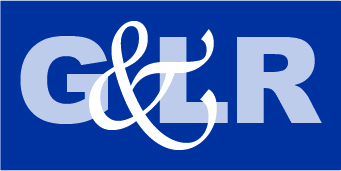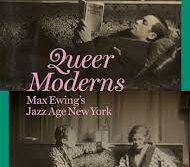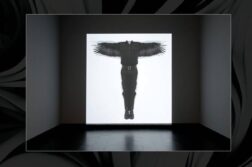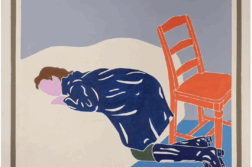Peter Hujar: Speed of Life
The Morgan Library & Museum, NYC
Jan. 26–May 20, 2018
Exhibition Catalogue
by Peter Gefter, Joel Smith, Steve Turtell
Aperture. 248 pages, $50.
PHOTOGRAPHER Peter Hujar (1934-1987) finally gets his critical due with a sumptuous exhibition of his extraordinary œuvre at two museums this year. Peter Hujar: Speed of Lifeis currently on view in New York at The Morgan Library and Museum through May 20. It then moves to the Berkeley Art Museum from July to October.
Hujar is known primarily for the unabashed, erotic intimacy of his male nudes and the glorious theatricality of his drag icons, but this important show also features searing photographs of urban detritus and stark cityscapes, as well as tender portraits of artists, friends, and animals, in addition to mummified remains in Italian catacombs. Augmenting the 160 pictures are contact sheets, correspondence, ephemera, and tear sheets from early commercial work in Harper’s Bazaar, GQ, and The Village Voice.
Hujar’s æsthetic standards were uncompromising. Shooting in black-and-white with his twin-lens reflex camera, he was a consummate perfectionist. His handmade prints are flawless, with a clarity of resolution, as he worked to achieve a perfect balance of saturated black and gentle grays, distilling each image down to its unadorned essence. While technically intricate, the photos themselves are playful, with subjects casual and spontaneous—evidence of a warm rapport with his subjects. There is no critical detachment here. Hujar sought to take “uncomplicated, direct photographs of complicated and difficult subjects.”
During his lifetime, Hujar captured the zeitgeist of the inchoate cultural scenes in Manhattan’s East Village in the 1970s and ’80s: the nascent gay liberation movement, burgeoning avant-garde performance and drag scenes, and early devastation from the AIDS epidemic. And he photographed men, in all states of nudity and arousal, at the infamous Christopher Street Pier, backstage, or at the photographer’s loft. The exhibition catalogue quotes him as saying: “I photograph those that push themselves to any extreme. That’s what interests me, and people who cling to the freedom to be themselves … I want people to feel the picture and smell it.”

Transgender Warhol superstar Candy Darling invited Hujar to make a portrait of her in the hospital as a “farewell to my fans.” Hujar wrote of the shoot that Candy was “playing every death scene from every movie.” His classic photograph is an exquisite capturing of a fully made-up and coiffed Candy, a pre-death mask of imploded beauty. She died of lymphoma at the age of 29. Candy Darling on her Deathbed(1973) became one of Hujar’s signature images, and the most reproduced during his lifetime.
Photographer Nan Goldin said this about Hujar: “His photographs become the most honest, haunting, and sustaining record of our vanishing tribe.” While quite influential to artists such as Goldin and Robert Mapplethorpe, he was defiantly reticent and remained an outsider, eschewing the limelight and alienating curators, gallery dealers, and collectors. Fran Lebowitz said at his funeral: “Peter was incapable of being nice to anyone who could do him any good.” Although revered artistically, he was destitute when he died from AIDS-related pneumonia at 53.
One important relationship that Hujar sustained was with visual artist David Wojnarowicz, who was twenty years his junior. They were briefly lovers, but Hujar soon became more of a mentor. In Cynthia Carr’s 2013 biography of Wojnarowicz, Fire in the Belly, he talked about how central Hujar was in his life: “Everything I made, I made for Peter.” When Hujar died, Wojnarowicz photographed the face, hands, and feet of “my friend … my brother my father my emotional link to the world.”
About his legacy, Peter Hujar once mused: “I want to be discussed in hushed tones. When people talk about me, I want them to be whispering.” Now, three decades after his death, Peter Hujar: Speed of Liferamps up the volume for long overdue recognition of this singular photographic genius.
For those who want to delve even deeper into Hujar’s work, check out the two monographs Night(2005) and Love & Lust(2014), published by the Fraenkel Gallery in San Francisco, long a stalwart of his work. Nightis revelatory, including 43 ravishing photographs of desolate architectural streetscapes, men in parks cruising, and Halloween celebrants. Hujar’s self-portrait in a jockstrap on the cover of Love & Lustcaptures this collection described in the catalogue as visual meditations on “arousal, erection, and orgasm.”
John R. Killacky is executive director of Flynn Center for the Performing Arts in Burlington, VT.




